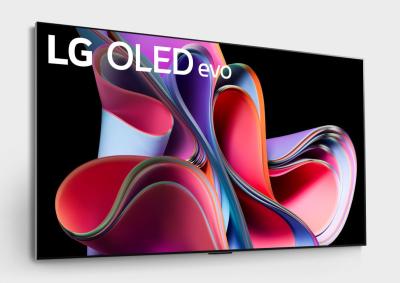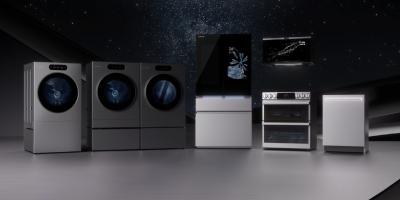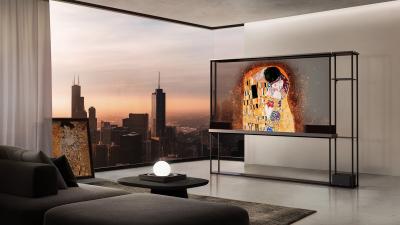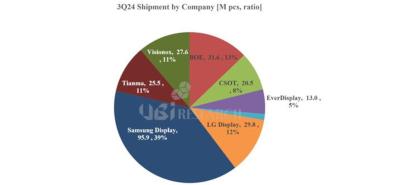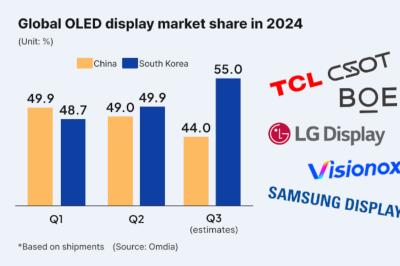 LG Display, based in Korea, is one of the world's largest display makers. LGD produces screens for TVs, laptops and mobile devices, focusing on OLED technologies.
LG Display, based in Korea, is one of the world's largest display makers. LGD produces screens for TVs, laptops and mobile devices, focusing on OLED technologies.
LG Display is the world's leading OLED TV and monitor panel producer (based on its WOLED architecture). The company also produces flexible AMOLEDs for wearables, tablets and smartphones (branded as pOLEDs, and supplied to many companies including Apple). LG Display is also offering automotive OLED displays, transparent OLEDs, and is developing OLED microdisplays.
LG Display supplies WOLED TV panels in a wide range of sizes, from 42-inch to 97-inch, to many companies including Panasonic, LG Electronics, Sony, Philips, Loewe, JVC, Hisense, Konka and others. It is a main AMOLED supplier for Apple's smartwatch, mobile phones and tablet products. It is also considered to be the leading automotive OLED producer.
LG Display has been producing transparent OLEDs since 2019, when the company started commercial production of 55" FHD transparent OLEDs, finding small markets in signage, commercial, mobility and more. The company since expanded its range, although production volume is still limited.
Towards the end of 2015 LG Display acquired LG Chem's OLED lighting business unit for $135 million, but it later withdrew from the lighting market.
128, Yeoui-daero
Yeongdeungpo-gu
Seoul
South Korea
LG Display's latest WOLED panels reach 4000 nits, the company details the META 3.0 technology behind it
Last week LG Electronics officially launched its 2025 OLED TV range, where some of the high-end models reaching 4,000 nits. LG Display today unveiled the technology behind these new OLED displays.
LGD's so-called META 3 WOLED panels (which are the company's 4th-gen WOLEDs) achieve 33% higher brightness to each a maximum of 4,000 nits. The new panels adopt a new stack structure that has two layers of blue emitters and two more layers, one with red emitters and one with green emitters. LGD refers to this architecture as a "Primary RGB Tandem structure".
LG Electronics unveiled its 2025 OLED TV range
LG Electronics officially launched its 2025 OLED TV range, with 4 different series. The higher-end G5 and M5 models adopt a new WOLED panel design that increases the number of stacks to 4 (previous models used 3 stacks) which increases brightness and efficiency. Interestingly, none of these TVs use a microLens array (MLA).
So LG's OLED M5 is the company's flagship wireless 4K 144Hz OLED for 2025. The M5 will be offered in 65", 77", 83" and 97" sizes. The OLED G5 is the second top-of-the-line TV, with 4K 165Hz panels (144Hz on the 48-inch and 97-inch models), offered in a wide range of sizes (48", 55", 65", 77", 83" and 97").
LG Display to retrofit its iPad AMOLED line to produce iPhone OLEDs as Apple reduces its tablet display orders
In late 2024 we reported several times that demand for Apple's iPad Pro devices is lower than expected, and the company reduced its OLED panel orders from both Samsung and LG.
According to a new report from Korea, LG may decide to start using its IT AMOLED production line to produce smartphone displays. The company looks to supply 70 million iPhone AMOLED displays to Apple in 2025, up from around 65 million in 2024 (and 52 million in 2023). Converting the IT AMOLED line to smartphone panel production will enable LGD to increase capacity without a large investment in new equipment.
LG Electronics launches a refrigerator with a transparent OLED display
LG Electronics announced a new refrigerator, the Smart InstaView French Door Refrigerator, that has a 36" transparent OLED display embedded in the upper right door.
The OLED displays services both as a digital touch interface, and a "Dual InstaView" which means that users can view the contents of the refrigerator without opening the door. The display can also show "mesmerizing hologram-like visuals, blending the virtual with the real in a sublime fusion of art and high technology".
LG starts offering its transparent Signature OLED T TV with a $60,000 price tag
LG announced that it is starting to ship its transparent wireless Signature OLED T TV with a $59,999 price tag. The TV can be ordered from LG directly or from Best Buy
LG's Signature OLED T is a 77" 4K wireless transparent OLED TV that can change from a transparent mode to a black-background mode (via a raised black contrast film) in which it operates just like a normal OLED TV. The OLED T is powered by LG's Alpha 11 AI processor, and uses LG's Zero Connect box which makes it almost completely wireless (except the power).
LG Display deploys a new AI system to improve its OLED manufacturing process
LG Display announced that it has developed and deployed a new AI system that will improve its OLED production process. The system collects and analyzes OLED process manufacturing data in real-time. When the system finds anomalies in the OLED manufacturing process, it can alert in real time, and even find solutions.
LG Display says that since the introduction of this new AI system, its ability to analyze process data has been enhanced, significantly improving both manufacturing speed and accuracy. The time required to analyze and improve the causes of quality anomalies has been reduced from an average of three weeks to two days.
UBI Research: the OLED emitter market reaches a new high in Q3 2024
UBI Research estimates that the volume of OLED emitting materials purchased in Q3 2024 reached 32.7 tons, which is the highest ever, with the previous record in 2021. UBI expects 2024 as a whole to be the record year in OLED emitter material shipments.
In terms of customers, SDC holds the largest share with 41.4% of the total market, followed by LGD (20.5%), BOE (11.6%) and Visionox (8.3%). In terms of architecture, 83.7% of all emitter materials went into RGB OLEDs, 11.3% into WOLED (LG's WRGB) panels and 2.8% into QD-OLED panels.
UBI: OLED shipments increase in Q3 2024, mostly driven by increased shipments by LG Display and Everdisplay
UBI Research says that shipments of small OLED panels rose to 247 million units, up 7.8% from the previous quarter (and up 32.6% from Q3 2023), mainly driven by increase in shipments by LG Display and Everdisplay.
LG Display shipped 17.6 million smartphones panels in the quarter, up 64% from Q2 and 12.2 million wearable OLED panels (up 147%) - thanks to strong shipments to Apple. In total LGD's AMOLED shipments grew 74% quarter to quarter, and 115% from last year. UBI expects LGD to continue and increase its shipments in Q4. The company is almost at full capacity and UBI says the company may decide to expand the capacity at one of its existing 6-Gen fabs.
Omdia: Korea retakes the top position in OLED shipments in Q2 2024, as Samsung and LG aim to widen the technology gap with Chinese rivals
According to Omdia, Korea regained the top position in the AMOLED market in Q2 2024, after China surpassed Korea in Q1 2024 for the first time.
Omdia says that both Samsung Display and LG Display enjoyed increased sales of high-end AMOLED displays for IT devices (laptops and tablets), and held a market share of 49.9% in Q2 2024, while Chinese OLED makers (Visionox, BOE, Everdisplay, Tianma and CSoT) held a market share of 49%.
UBI: Apple reduces its iPad AMOLED orders from Samsung and LG as demand for its tablets is low
UBI Research estimates that Apple suffers from poor demand for its iPad Pro devices, and the company has reduced its orders from LG Display and Samsung Display. We heard signs of that already back in August.
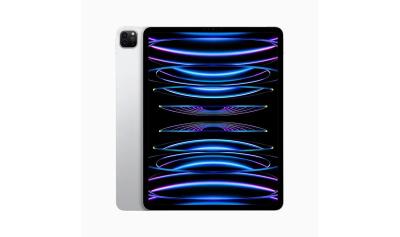
UBI estimates that LG Display's medium to large sized OLED panels shipments decreased 34% in Q3 2024, compared to the previous quarter. Samsung Display's tablet OLED panel sales dropped 38% in the quarter. Samsung however enjoyed higher sales of automotive OLEDs, which means that its entire medium-to-large sales were flat in the quarter.
Pagination
- Page 1
- Next page
